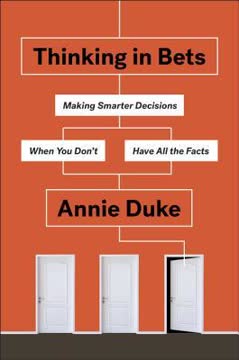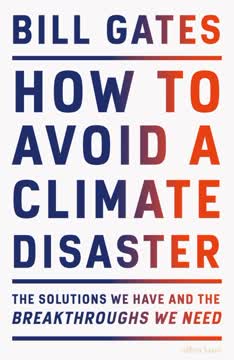Key Takeaways
1. Our minds are ancient survival machines, not happiness generators
"For the human spirit, that safe zone represents stagnation. It is where depression, rumination, avoidance, and anxiety live."
The mind prioritizes survival over happiness. Shaped by millions of years of evolution, our brains are wired to detect threats and avoid danger. This hypervigilance served our ancestors well but can lead to excessive anxiety, depression, and avoidance behaviors in our relatively safe modern world. The mind's constant chatter and worry are not malfunctions, but features of a well-oiled survival machine.
Understanding the mind's true nature is liberating. When we realize that our minds are not designed to make us happy, but to keep us alive, we can approach our thoughts and feelings with more compassion and less judgment. This perspective allows us to:
- Recognize that negative thoughts and emotions are normal, not personal failings
- Stop fighting against our minds and instead work with them
- Make conscious choices based on our values, rather than reflexively obeying our minds' fearful impulses
2. Thoughts and feelings are not facts, but fleeting mental activities
"Thoughts are not facts."
Mental experiences are transient phenomena. Our thoughts and feelings, no matter how compelling or intense, are not literal representations of reality. They are temporary mental events, like clouds passing through the sky of our consciousness. Recognizing this truth can help us avoid getting entangled in unproductive rumination or emotional spirals.
Practicing cognitive defusion is key. To gain distance from our thoughts and feelings:
- Use the phrase "I'm having the thought that..." to create separation
- Visualize thoughts as leaves floating down a stream or soldiers in a parade
- Notice the transient nature of emotions, even intense ones
- Remember that having a thought doesn't make it true or require action
3. Observe your mind without judgment to gain psychological flexibility
"Observing the mind is rather like praying or meditating, in that it can be complex and esoteric or as simple as you wish it to be."
Mindful observation increases freedom. By developing the ability to watch our minds at work without getting caught up in their content, we gain the power to choose our responses rather than reacting automatically. This psychological flexibility allows us to pursue our values even when our minds protest.
Practical techniques for mindful observation:
- Practice the "Tiny Soldiers on Parade" visualization exercise
- Use the "I am experiencing the thought..." technique
- Notice physical sensations associated with emotions
- Cultivate curiosity about your mind's activities, rather than trying to control them
4. Values-based living trumps mood-based decision making
"Clearly defined values can provide the motivation to drop the battle against the mind, the reason to disobey the mind, and the guidance to create a life of meaning."
Values provide direction when emotions mislead. Our moods and feelings are unreliable guides for decision-making. By clarifying our core values and using them as a compass, we can make choices that align with our deepest aspirations, even when our minds or emotions pull us in other directions.
Steps to values-based living:
- Identify your core values across different life domains
- Set specific, values-aligned goals
- Take small, consistent actions toward those goals
- Practice "opposite action" when emotions conflict with values
- Accept discomfort as part of pursuing meaningful goals
5. The mind's "trump cards" and double standards are protective but limiting
"Trump cards and double standards are part of the mind's survival logic. They exist for a reason, and sometimes they're right."
The mind employs powerful persuasion tactics. To keep us safe, our minds use "trump card" thoughts (e.g., "If you really knew me...") and double standards (being harsher on ourselves than others) to influence our behavior. While these strategies can be protective, they often limit our growth and relationships.
Strategies for managing trump cards and double standards:
- Recognize these patterns when they arise
- Question the evidence supporting these thoughts
- Consider alternative explanations or perspectives
- Practice self-compassion and extend the kindness you show others to yourself
- Take small risks to test the validity of these limiting beliefs
6. Embrace pessimism's evolutionary purpose while cultivating optimism
"Pessimism: The Ancient Cure for Modern Times"
Pessimism serves an adaptive function. Our tendency to anticipate and prepare for the worst has evolutionary roots. It helps us avoid dangers and solve problems. However, unchecked pessimism can lead to unnecessary suffering and missed opportunities.
Balancing pessimism and optimism:
- Use "defensive pessimism" to plan for potential obstacles
- Practice "strategic optimism" to maintain motivation and resilience
- Cultivate realistic optimism by considering both potential risks and rewards
- Remember that thoughts about the future are predictions, not facts
- Use Pascal's Wager-style thinking to make decisions under uncertainty
7. Quick fixes and addictions are the mind's misguided attempts at problem-solving
"The mind can drive us to 'fix' our problems though complex behaviors like drinking, compulsive shopping, or seeking out shallow sexual relationships, but it can operate in subtler ways as well."
Short-term relief often leads to long-term suffering. The mind's desire for immediate gratification and discomfort avoidance can lead to addictive behaviors and unhealthy coping mechanisms. These "quick fixes" provide temporary relief but often exacerbate the underlying problems.
Healthier approaches to problem-solving:
- Practice delaying gratification in small ways to build willpower
- Use mindfulness techniques to sit with discomfort rather than avoiding it
- Identify the function of addictive behaviors and find healthier alternatives
- Break large problems into smaller, manageable steps
- Seek professional help for persistent addictions or compulsions
8. Mood profoundly influences perception, memory, and behavior
"Mood can alter our perception like a new lens on a camera can alter the pictures it takes."
Our emotional state colors our reality. Mood affects how we perceive the world, what memories we can easily access, and how we interpret events. This can create self-reinforcing cycles of negative or positive experiences.
Strategies for managing mood's influence:
- Practice mood labeling to increase emotional awareness
- Use "opposite action" techniques to counteract mood-driven behavior
- Remember that "my mind might be wrong" when in extreme moods
- Engage in activities that cultivate positive emotions
- Seek professional help for persistent mood disorders
9. Healthy lifestyle habits fortify us against the mind's maladaptive tendencies
"Proper diet, sleep, and exercise can minimize bad moods and distorted perceptions, and they can help us resist a mind that is dragging us away from our values."
Physical well-being supports mental resilience. Basic lifestyle factors like nutrition, sleep, and exercise have a profound impact on our ability to manage our minds effectively. By prioritizing these foundational habits, we become less vulnerable to maladaptive thoughts and emotions.
Key lifestyle factors to optimize:
- Nutrition: Balance blood sugar, limit caffeine and alcohol, eat whole foods
- Sleep: Prioritize consistent sleep patterns and good sleep hygiene
- Exercise: Engage in regular physical activity, tailored to individual preferences
- Social connection: Cultivate supportive relationships and community
- Stress management: Practice relaxation techniques and set healthy boundaries
Last updated:
Review Summary
The User's Guide to the Human Mind receives mostly positive reviews, with readers praising its clear explanations of cognitive psychology concepts and practical advice for managing anxiety and depression. Many appreciate the author's humorous and relatable writing style. The book is commended for its insights into why the mind works as it does, based on evolutionary psychology. Some readers find it repetitive or basic, but overall it's recommended for those interested in understanding their thoughts and behaviors better. Exercises provided are considered helpful for self-improvement.
Similar Books










Download PDF
Download EPUB
.epub digital book format is ideal for reading ebooks on phones, tablets, and e-readers.





